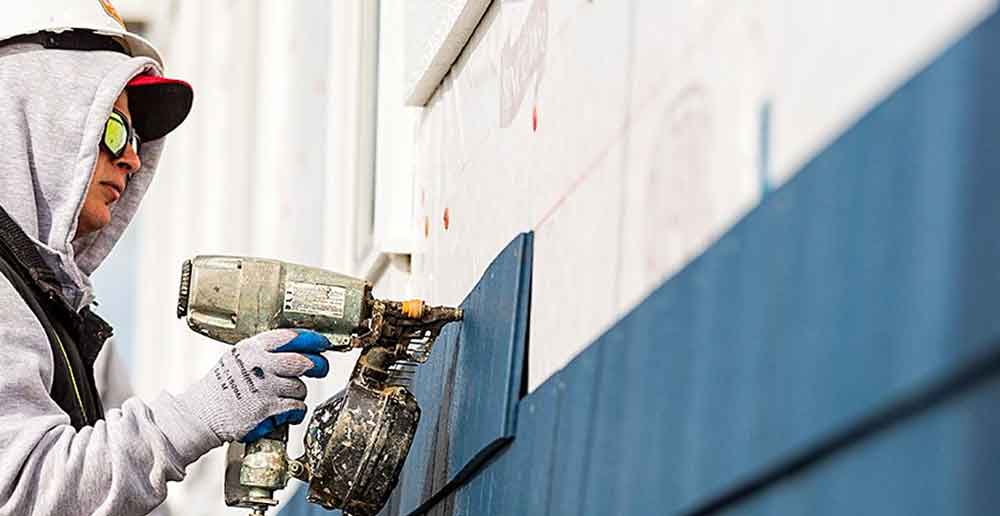- Home
- Resources
- Amerhart Insider Blog
- Construction & Design Trends
- How To Avoid The Four Common Siding Installation Mistakes
How To Avoid The Four Common Siding Installation Mistakes

While LP® SmartSide® Trim & Siding is easier to install, builders may feel pressured to skip a second look at installation guidelines in order to get a project complete on time or makeup for labor shortages. However, whether you’re a new or longtime LP SmartSide Trim & Siding user, taking the time to be attentive to proper installation will ensure you are upholding your product warranty and avoiding potential issues down the road.
To help prevent improper installation, Isaac Ojeda, Construction Service Associate at LP Building Solutions, has outlined the most common installation mistakes.
- Using the wrong nails.
- Improper spacing.
- Improper flashing. and caulking
- Not staying current on new installation rules.
Using the wrong nails: The effects of using the wrong nail can have a lasting, negative impact. “For LP SmartSide siding products, use a hot-dipped galvanized nail. This type of nail has a thick protective coating that can stand up to a nail gun without chipping off the coating,” says Ojeda. He goes on, “On the contrary, with electroplated nails, the protective coating is thinner and may chip off more easily. This can lead to rust streaks running down the siding.”
Improper spacing: Make sure to follow proper spacing requirements. Improper spacing can cause siding to buckle, a common wood siding installation mistake. LP lap siding products require a minimum 3/16” spacing at all butt joints and where siding butts up to trim. “For some LP SmartSide Panel Siding products an alignment groove is provided to aid in the proper spacing of those panels,” says Ojeda.
Builders can also often forget that different siding types require different installation methods. “When contractors switch from fiber cement to engineered wood, there is often a learning curve,” says Ojeda. “For example, LP SmartSide products grow during the acclimation process, so we require a gap to allow for expansion, while fiber cement products shrink, requiring no gap.”
“We’ve also seen gap issues with joint molding installation. We’re finding installers will leave the required 3/16” gap, but not take the thickness of the web into account. This results in the joint molding being pushed out as our siding acclimates. For proper installation, add the thickness of the molding web to the gap and allow a net 3/16” space for expansion,” says Ojeda.
*This articlelists step-by-step instructions for avoiding buckled butt joints.
Improper flashing and caulking: Board and batten installations with panels and batten strips need proper flashing for long-lasting durability. For example, when installing on a two-story structure, you’d stack an LP SmartSide Panel on top of the lower one, creating a horizontal seam. The batten strip is then placed over the panel to give you the board and batten look. A common mistake is installing the batten strip over the horizontal seam and z-flashing. “LP SmartSide guidelines require you to stop the batten strip at the horizontal seam and flash over the top edge of the panel and batten strip. You can then continue the batten strip above that seam,” says Ojeda. “In addition to the z-flashing, installers should provide a 3/8” gap between the panel and batten strip and the z-flashing. To ensure proper drainage do not caulk the 3/8” gap at the seam.”
Not staying current on new installation rules: As manufacturers evolve, so do their installation guidelines. For instance, LP recently updated the application instructions on its strand substrate lap siding. Previously, LP recommended installers to prime and paint all exposed cut edges, prior to caulking or using joint molding. “With this update, you can now caulk or install the joint molding without having to also prime and paint the exposed cut edges. You are still required to seal any exposed cut edges where sealant is not applied, such as at roofline clearances, etc.” says Ojeda.
















